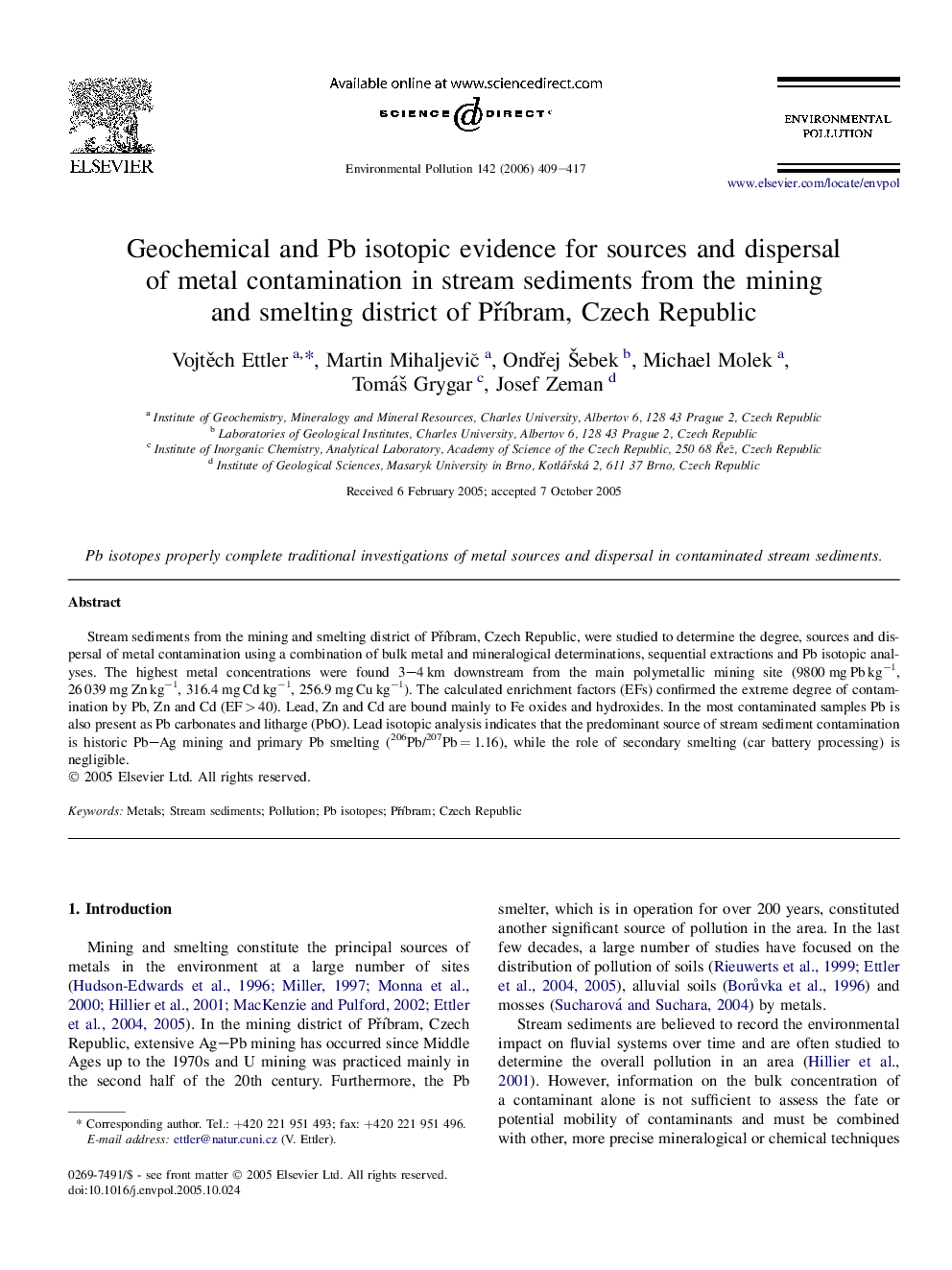| Article ID | Journal | Published Year | Pages | File Type |
|---|---|---|---|---|
| 4427896 | Environmental Pollution | 2006 | 9 Pages |
Stream sediments from the mining and smelting district of Příbram, Czech Republic, were studied to determine the degree, sources and dispersal of metal contamination using a combination of bulk metal and mineralogical determinations, sequential extractions and Pb isotopic analyses. The highest metal concentrations were found 3–4 km downstream from the main polymetallic mining site (9800 mg Pb kg−1, 26 039 mg Zn kg−1, 316.4 mg Cd kg−1, 256.9 mg Cu kg−1). The calculated enrichment factors (EFs) confirmed the extreme degree of contamination by Pb, Zn and Cd (EF > 40). Lead, Zn and Cd are bound mainly to Fe oxides and hydroxides. In the most contaminated samples Pb is also present as Pb carbonates and litharge (PbO). Lead isotopic analysis indicates that the predominant source of stream sediment contamination is historic Pb–Ag mining and primary Pb smelting (206Pb/207Pb = 1.16), while the role of secondary smelting (car battery processing) is negligible.
